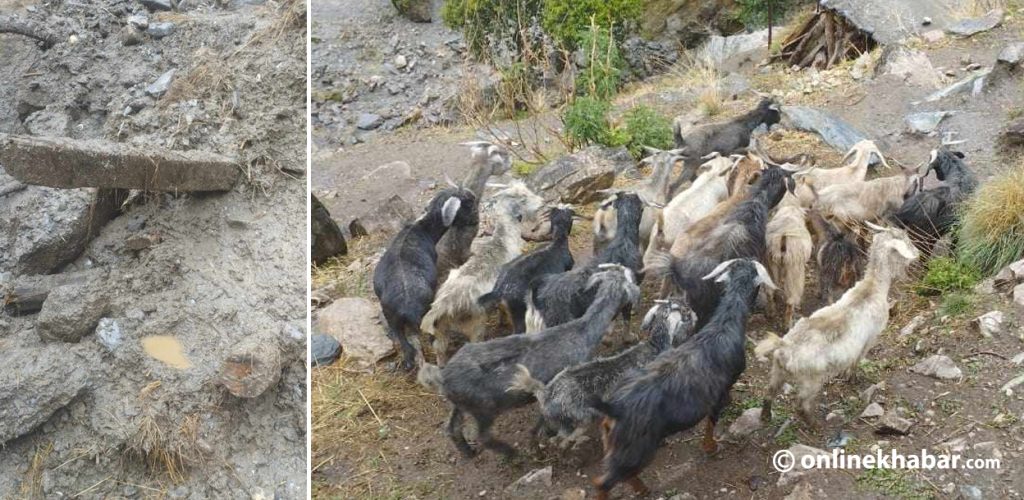
Communities are the heart of any biodiversity conservation activities and their role is crucial for the success of any programme. We realised it more while spending a week in Sandakpur of Ilam and watching red pandas, which made our trip a satisfying one.
Red pandas are endangered species legally protected in India, Bhutan, China, Nepal and Myanmar; that was not new information for us. But, we came to know about the community-based red panda conservation projects of the Red Panda Network in Nepal. In 2007, it initiated a project Punde Kundo, believed to be the world’s first community-based red panda conservation project in eastern Nepal.
Indeed, these kinds of projects have been a frontline for the livelihood improvement of locals by promoting ecotourism in the high Himalayas while significantly contributing to conservation efforts.
Impact of Red Panda Network
Red Panda Network began its journey with the hope to establish a suitable habitat for the animal in the nearby forests of Sandakpur, joining hands with the local community. Reaching the people who live among the red pandas and imparting knowledge about how a community could play a role in their conservation were the targeted objectives of the project.
Currently, there are 110 forest guardians in different project area districts of Nepal. To minimise illegal trade and hunting of these animals, anti-poaching programmes are being conducted. After the inception of these programmes, there have not been any reports of red panda snares and traps during habitat monitoring and patrolling, no confiscations of panda pelts by Nepal Police and Division Forest Offices and no arrests (in any part of Nepal) for smuggling the pelts.
The organisation is funding and appointing forest guardians in different districts of Nepal to ensure the protection of small animals and minimise illegal hunting and trade.
Moreover, only four cases were reported in eastern Nepal amongst 121 cases reported during the last 12 years. Then the PIT (Panchthar-Ilam-Taplejung) corridor in eastern Nepal successfully achieved zero poaching from the year 2019 to 2021 and these statistics indicate the effectiveness of ongoing conservation projects.
After the extension of red panda conservation projects in western Nepal, from 2017 onwards, the illegal trade has fallen as compared to the past. However, following the Covid pandemic and nationwide lockdown, the number of illegal trades increased in the country (37 pelts confiscated), which may be due to the economic enforcement limitations related to the pandemic and poverty.
Ecotourism prospect

Rural poverty continues to show a disturbing correlation with conservation even in the richest biodiversity hotspots. Local people are unable to make wildlife conservation a priority since they are struggling for food and shelter.
Realising this fact, a homestay programme was introduced in the Choyatar and Dobato villages of Sandakpur in 2010 to improve the living standard of the community and to boost conservation works together.
A lot of progressive changes have arisen from the homestay programme. Every homestay has allocated 15 per cent of its annual income for red panda conservation since the date of its commencement.
These home-based businesses have helped local families by generating income and providing visitors with a safe and affordable place to stay while learning more about local customs, food, and, of course, wildlife.
These initiatives have promoted the local culture and a rotational hosting system is used by the villagers to welcome guests, which ensures financial equality, and benefit-sharing, and enhances community cooperation.
It has awakened local people to realise the value of the conservation of such iconic species in our country. Homestay owners have understood that red pandas should be conserved not only for them but also for future generations.
Annually, a large number of global visitors come to watch these animals in the wild for a unique experience, research, and wildlife photography. The recent study findings have shown evidence of a growing red panda population in the country.
As many as 104 community forests of Nepal are engaged with community-based monitoring in collaboration with the organisation to protect red pandas in their range. Despite these efforts, harvesting of fuel wood, and timber, overgrazing and construction of rural roads and trekking routes have some impact on forest resources.
And, there still lingers the challenging issues for conservation due to the lack of information on a landscape level, bottlenecks, potential corridors, people’s perception and habitat degradation. Therefore, future conservation should be research-oriented and have a mechanism for problem-solving, which are the vital needs for sustainable red panda conservation in Nepal.




















